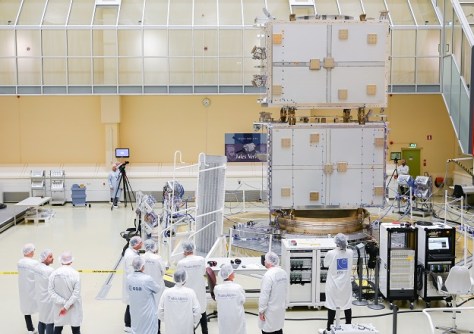
The new Galileo satellite design from Thales Alenia Space has undergone mechanical and signal performance testing at ESA’s ESTEC Test Centre in Noordwijk, the Netherlands, which involved being exposed to launch-like noise and vibrations as well as proving its ability to send signals.
The Galileo constellation currently comprises 28 satellites in orbit and 10 more due to be launched, after which a new generation of satellites, the Galileo Second Generation or G2, will boost the fleet with enhanced capabilities.
“G2 satellites will be much larger than those of the First Generation, use electric propulsion, host a more powerful navigation antenna, carry more and even better atomic clocks on board and have fully digital payloads,” said the European Space Agency’s (ESA) Galileo Second Generation Project Manager, Miguel Manteiga Bautista.
“The modular architecture will offer a high degree of flexibility to accommodate more equipment and inter-satellite links will be enabled.”
The mechanical and signal performance assessment at the ESTEC Test Centre used structural models, a mechanical representative of a satellite that has dummy masses instead of equipment, propellant and appendages.
Enormous sound horns at ESA’s Large European Acoustic Facility blasted the models with noise equivalent to multiple jet aircraft lifting off simultaneously. Then, they had to withstand earthquake-like vibrations at the Hydraulic Multi-axis Shaker. Finally, they endured a mechanical shock alike to that which a satellite experiences during its separation from a rocket.
“The satellites will be launched in pairs, one on top of each other and connected to the launcher until separation, so we had to test them in this configuration,” said Alberto Bramante, ESA’s Head of Management Office for Thales Alenia Space G2 Satellite.
“Each satellite is over 2000 kg and when stacked, they reach a towering height of seven metres. Seeing the models undergo testing in this configuration was both impressive and nerve-wracking, and we are thrilled that this new design concept for Galileo has received mechanical qualification.”







